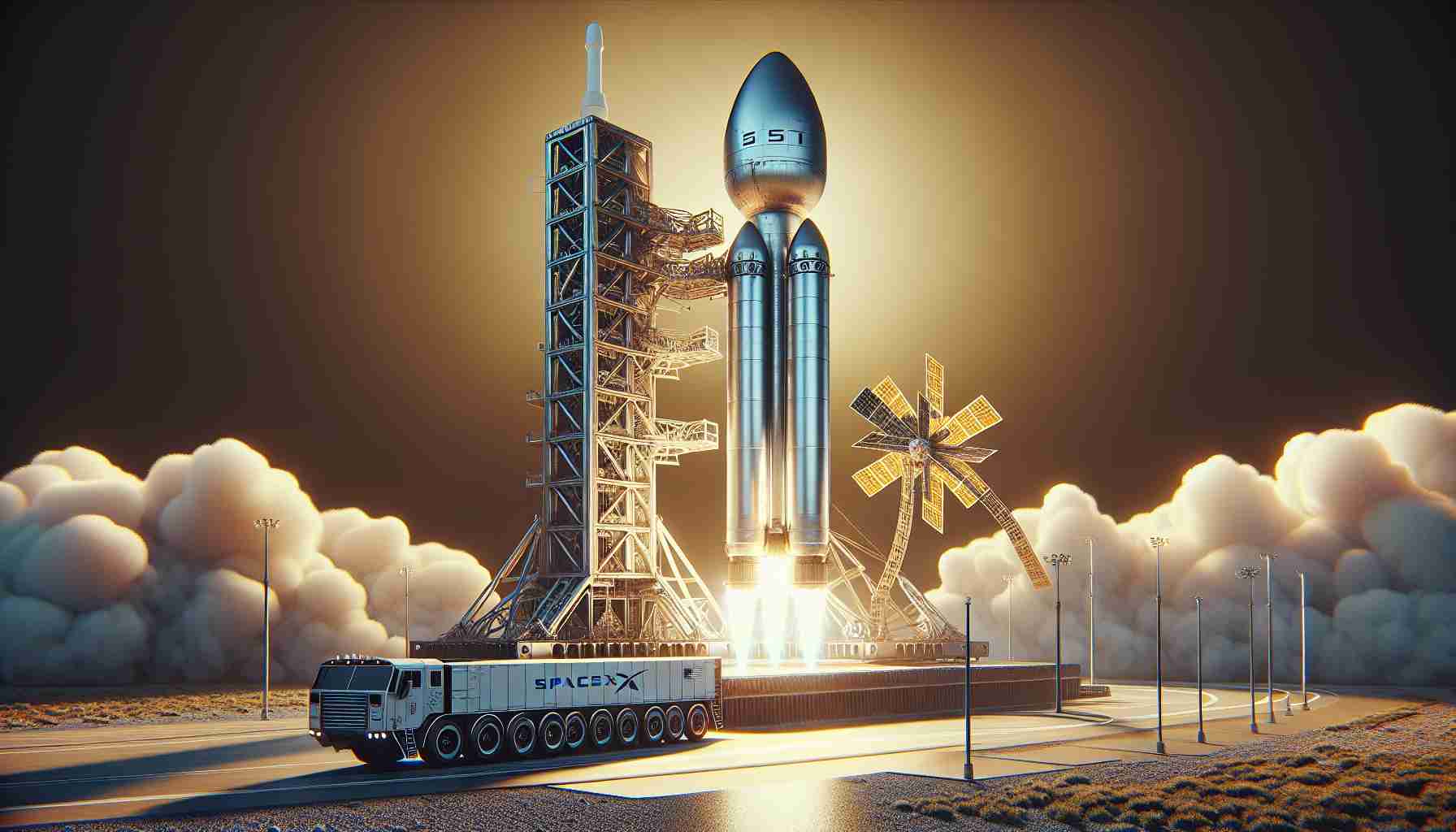NASA has confirmed that Falcon Heavy, one of SpaceX’s most powerful rockets, will be the vehicle for its upcoming Dragonfly mission in 2028. This follows closely on the heels of Falcon Heavy’s recent success, launching the Europa Clipper mission just a month ago. Notably, this mission involves carrying nuclear materials as it relies on a plutonium power source, marking SpaceX’s first attempt at such a feat. Due to the special requirements for nuclear payloads, an additional NASA safety certification is needed.
The Dragonfly Mission: A Titan Adventure
Dragonfly is set to be one of NASA’s pioneering endeavors. It will transport an advanced rotorcraft to Saturn’s moon, Titan, to explore its dense atmosphere in search of organic compounds, which are considered the precursors to life. The ambitious mission features a rotorcraft about the size of a compact car, significantly larger than its technological predecessor, the Ingenuity Mars helicopter. With a journey set to commence in July 2028, the target is for Dragonfly to land on Titan by 2034. NASA has allocated $256.6 million for the launch.
Blue Origin’s New Glenn: Ready for Testing
Over at Cape Canaveral Space Force Station, Blue Origin’s New Glenn rocket has made a dramatic return to the launch pad. The 322-foot behemoth prepares to undergo crucial pre-flight tests ahead of its maiden flight. Equipped with seven cutting-edge BE-4 engines, Blue Origin aims to conduct thorough testing, including engine test-firing and propellant loading, before announcing a launch date. This signals a significant stride toward launching New Glenn by the end of the year.
Exploring the Cosmos: The Rising Titans of Space Travel and Their Impact on Humanity
Introduction: The Expanding Horizons of Space Exploration
As humanity reaches deeper into the cosmos, exciting new missions and technologies are paving the way for an unprecedented era in space travel. Beyond the headlines dominated by SpaceX’s Falcon Heavy mission carrying NASA’s Dragonfly, there’s an underlying wave of innovations that promise to reshape our understanding of the universe and propel technological advancement here on Earth. Let’s dive into the lesser-known facts, fascinating controversies, and the implications these advancements have for humanity’s future.
Sustainability in Space Missions: Plutonium Power and Beyond
One of the topics not discussed in detail is the reliance on plutonium power sources for missions like Dragonfly. The use of such power sources is both an innovation and a controversy. Plutonium Radioisotope Thermoelectric Generators (RTGs) are essential for missions where solar power is not viable, allowing spacecraft to function in the dim outer reaches of our solar system. However, their use raises concerns about the risks of launching nuclear materials and the environmental implications should an accident occur.
Can We Ensure Safe Nuclear Launches?
The prospect of launching plutonium into space necessitates stringent safety measures. NASA’s additional safety certifications aim to mitigate any risk, but the public concern is valid. Will these safeguards be enough to prevent potential catastrophes? It’s a question that continues to spark debate and requires transparency from all involved parties.
Breakthroughs in New Technology: The Titan Rotorcraft
The Dragonfly mission itself showcases a remarkable leap in aeronautical engineering. The rotorcraft designed for Titan is significantly larger and more complex than any previous extraterrestrial flying vehicle. This rotorcraft will autonomously explore Titan’s thick atmosphere, assessing organic compounds which could hint at the building blocks of life outside Earth. This could revolutionize our understanding of life in the universe and stimulate a new era of astrobiology.
The Race of Space Giants: Blue Origin vs. SpaceX
While SpaceX has garnered much attention, Blue Origin is not far behind with its New Glenn rocket poised for its first flight. Some interesting facts about New Glenn include its capacity for heavy payloads and its reusability, which are crucial for reducing the cost of space travel. However, Blue Origin faces its own set of challenges, such as delays and performance scrutiny over its BE-4 engines. Could Blue Origin’s advancements eventually outpace SpaceX, or will the competitive spirit drive both companies forward, benefitting the industry and humanity?
Implications for Global Progress: Pros and Cons
The rise of private space companies and partnerships with agencies like NASA herald numerous benefits:
– Advantages: These partnerships can lower the cost of space exploration, drive innovation, and open up commercial space opportunities. Moreover, the technology developed for space missions often finds valuable applications on Earth, such as in telecommunications, environmental monitoring, and materials science.
– Disadvantages: The rapid pace of technological advancement also brings challenges, including regulatory hurdles, environmental concerns, and geopolitical tensions. There is also the risk of monopolization within this burgeoning industry, which could stifle competition and innovation in the long term.
The Future: Where Do We Go from Here?
As these powerful new rockets aim for the stars, one must ask: what will humanity’s role be in the vast ecosystem of space exploration? The answers lie not only in technological prowess but in responsible stewardship, fostering international cooperation to ensure space remains a domain for peaceful exploration and scientific advancement.
For more information, you can visit NASA and Blue Origin.
This new wave of exploration is more than just a technical feat; it’s a defining moment in human history, challenging us to think about what comes next and how we can navigate the fine balance between innovation, safety, and ethical responsibility. As we stand on the precipice of these new discoveries, the potential benefits for humanity are vast—waiting for us to grasp them.







